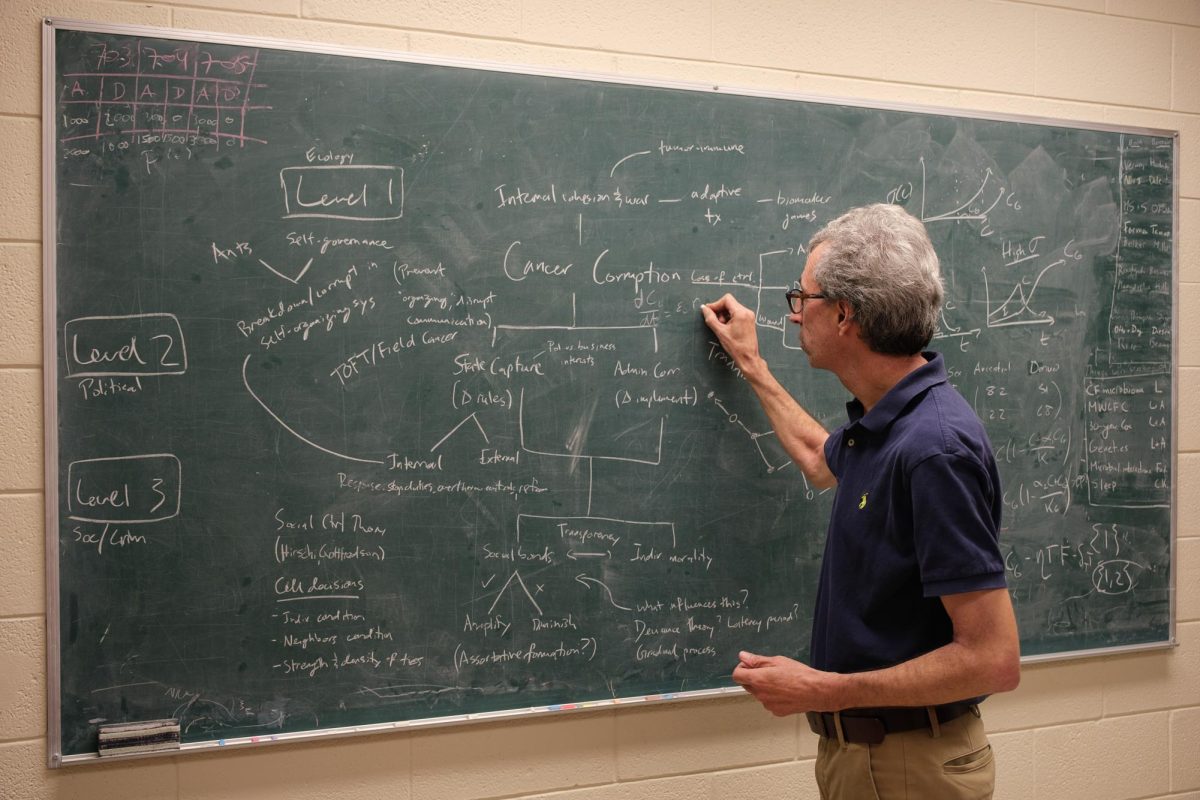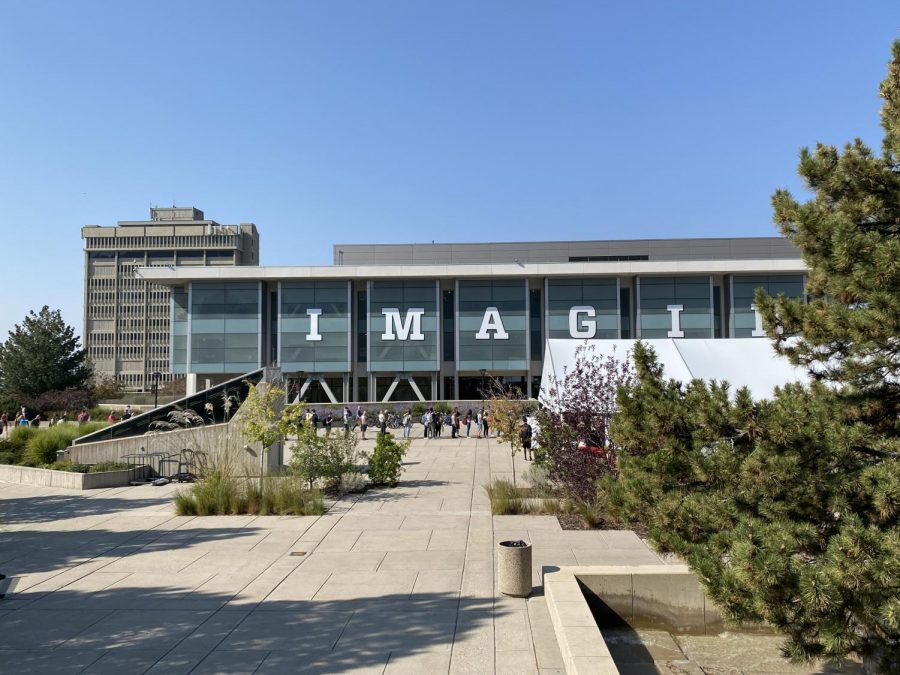Why would a scientist want to make a copy of something that is broken?
For Cindy Burrows, professor of chemistry, making copies brings her one step closer to repairing damage. Burrows and her team have found a way to find, mark and copy chemical damages in DNA code, which cause such diseases as cancer and Alzheimer’s.
DNA damage and repair has been on the minds of many scientists, including the winners of this year’s Nobel Prize in chemistry, who researched how cells map and repair DNA damage. But Burrows’ lab, including Jan Riedl, Yun Ding and Aaron Fleming, has discovered something unique.
DNA is the molecule that makes up our genetic code as living organisms, containing strands of four chemical bases — adenine (A), thymine (T), cytosine (C) and guanine (G) — that create base pairs. When there is damage to one of the bases, DNA does not know how to copy that spot and the original damage is lost. By using an unnatural base pair from the Scripps Research Institute in California, Burrows was able to assure that each copy contained the original damage.
“This is a problem that other labs have tried to address and none of them have ever succeeded,” said Fleming, research assistant professor of chemistry who worked on the project.
This will help both Burrows and other scientists overcome the barrier of acquiring a large population of molecules to find patterns in the damage sites. In order to study one molecule, you need billions of molecules with identical copies. Finding the rare and random spots is difficult.
“It’s like there’s one fish in the pond and someone tells you to go out and catch it,” Burrows said. “But if there are a thousand identical fish in the pond, you have a pretty good chance of catching one.”
To continue the research, the team is now studying how the damage, generally related to age, is distributed in mouse cells. From there, they can find a diet, pharmaceuticals or certain conditions that make those spots less susceptible to damage. Burrows said this research is still years away from the medical clinics, but understanding the mechanisms behind these diseases is fundamental to later treating them.
“Once we can understand the source of the mutation that is disease-causing, we can find where they are derived from … then you can advise people to combat those and prevent disease,” Fleming said.
Burrows’ team received $1.2 million from the National Institute of Health for this project.
@carolyn_webber
















